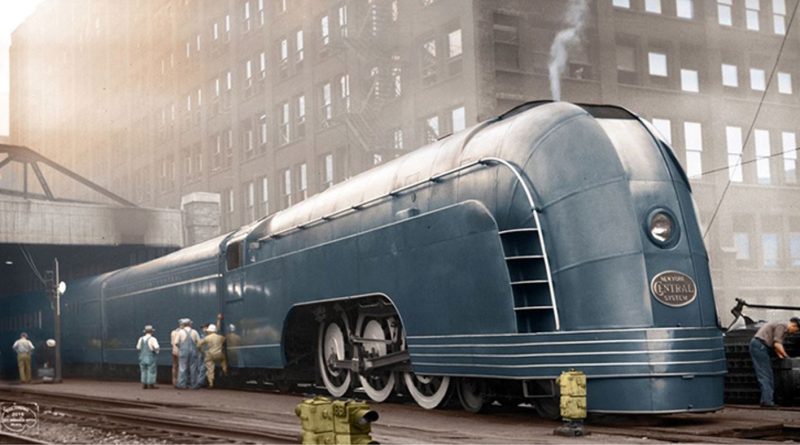Mercury Streamliner: Art Deco Train Operated Between The 30s And 50s
A streamliner is a vehicle incorporating streamlining in a shape providing reduced air resistance. The term is applied to high-speed railway trainsets of the 1930s to 1950s, and to their successor “bullet trains“. Mercury was the name used by the New York Central Railroad for a family of daytime streamliner passenger trains operating between midwestern cities. The design of Mercury Streamliner was created by the noted industrial designer Henry Dreyfuss and is considered a prime example of Streamline Moderne design. The success of the Mercury led to Dreyfuss getting the commission for the 1938 redesign of NYC‘s flagship, the 20th Century Limited, one of the most famous trains in the United States of America.

The original Mercury Streamliner was eventually dubbed the Cleveland Mercury and remained in service until the 1950s
The first Mercury, operating on a daily roundtrip between Cleveland and Detroit, was introduced on July 15, 1936. The Chicago Mercury, between Chicago and Detroit, and the Cincinnati Mercury, between Cincinnati and Detroit, followed. The Mercurys lasted until the 1950s, with the final survivor, the original Cleveland Mercury, making its last run on July 11, 1959.

The exterior of the locomotive and cars was medium gray with brushed aluminum trim. On each side, the passenger cars displayed the Mercury logo in the form of a silver medallion, showing the god Mercury in traditional representation with winged caps and sandals. The lights illuminating the driving wheels was a novel concept and purported to be the first of their kind. The Mercury trains also incorporated roller bearings on their axles, which helped them reach their speed limit of 80 miles per hour (130 km/h), but also made them harder to stop. Although in service the speed would be restricted to 80 mph, it was reported that the train’s top speed was over 100 miles per hour (160 km/h).
Mercury Streamliner’s top speed was over 100 miles per hour



Although each car was functionally separate, Dreyfuss’s design minimized the divisions between cars
Although each car was functionally separate, Dreyfuss’s design minimized the divisions between cars. He did this partly by having interior sections that spanned car boundaries. For instance, the coach section comprised the rear of the first car, the whole of the second, and the forward part of the third. The kitchen was in the rear of the third, while the dining room was in the following car.







